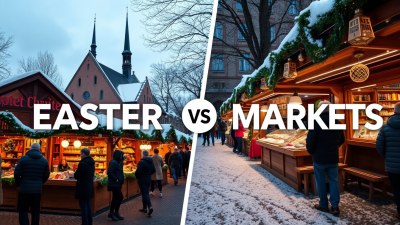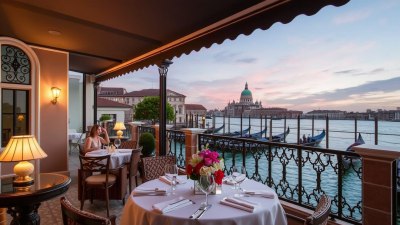Easter Markets vs. Christmas Markets: What’s the Difference?
Explore the differences between Easter and Christmas markets, from traditions to products and atmospheres.

Easter markets and Christmas markets are two of Europe’s most cherished seasonal traditions, where artisans, vendors, and communities come together to celebrate their respective holidays. While both types of markets share a focus on community spirit and festive cheer, there are distinct differences that set them apart. This article explores those differences, examining the origins, products, experiences, and cultural significance of Easter markets compared to Christmas markets.
Origins of Easter and Christmas Markets
The origins of Christmas markets date back to the late Middle Ages in Europe. Known as 'Christkindlmarkt' in Germany, these markets were originally established to provide locals with goods for the festive season leading up to Christmas. Over time, they evolved into vibrant celebrations of holiday culture, with food, crafts, and music playing a central role. Christmas markets typically run from late November through Christmas Eve, with some even continuing until New Year’s Day.
In contrast, Easter markets are a more recent phenomenon, gaining popularity in the 19th century. These markets, often referred to as 'Ostermarkt,' celebrate the arrival of spring and the holiday of Easter. Easter markets usually take place in the weeks leading up to Easter Sunday, showcasing an array of springtime crafts and foods while symbolizing rejuvenation and new beginnings.
Timing and Duration
Timing is one of the most significant differences between the two types of markets. Christmas markets generally open in late November, coinciding with Advent, and last for approximately four to six weeks. They create a festive atmosphere in city centers and village squares, drawing locals and tourists alike for holiday celebrations. Visitors can enjoy mulled wine, roasted chestnuts, and other seasonal delights as they shop for gifts.
Easter markets, however, typically operate for a shorter period, usually from mid-March to late April, depending on when Easter falls. With the holiday often celebrated in spring, the atmosphere is more about celebrating the end of winter and the arrival of warmer days. Visitors can expect to find decorations featuring pastel colors, flowers, and symbols of rebirth such as eggs and rabbits.
Atmosphere and Ambiance
The atmosphere of Christmas markets is often characterized by cozy warmth, with twinkling lights, festive music, and delicious smells wafting through the air. The scent of cinnamon and pine, along with the glow from stalls adorned with festive decorations, creates an idyllic winter wonderland. People gather around bonfires or heated tents to enjoy the cold weather while sipping hot beverages like glühwein.
Conversely, Easter markets exude a cheerful and vibrant ambiance. Brightly colored decorations, flower arrangements, and cheerful music signal the arrival of spring. The market stalls often feature colorful eggs, floral arrangements, and handcrafted spring-themed goods. While Easter markets can also have food stands, the offerings often include lighter fare compared to rich winter foods, focusing more on pastries, chocolates, and fresh produce.
Products Available
Food plays a significant role in Christmas markets, with visitors enjoying traditional items like gingerbread cookies, bratwurst, roasted nuts, and, of course, mulled wine. Every region boasts its own specialties, and it's not uncommon for visitors to sample various culinary delights as they stroll through the festive stalls.
Easter markets, on the other hand, place a significant emphasis on items associated with spring and Easter traditions. Visitors can expect to find beautifully decorated Easter eggs, handcrafted baskets, and greeting cards. Local artisans often showcase their work with painted wood, ceramics, and textiles that celebrate the themes of spring and renewal. Food stands frequently feature seasonal treats such as Easter breads, chocolates, and fresh fruit, reflecting the lighter nature of the season.











